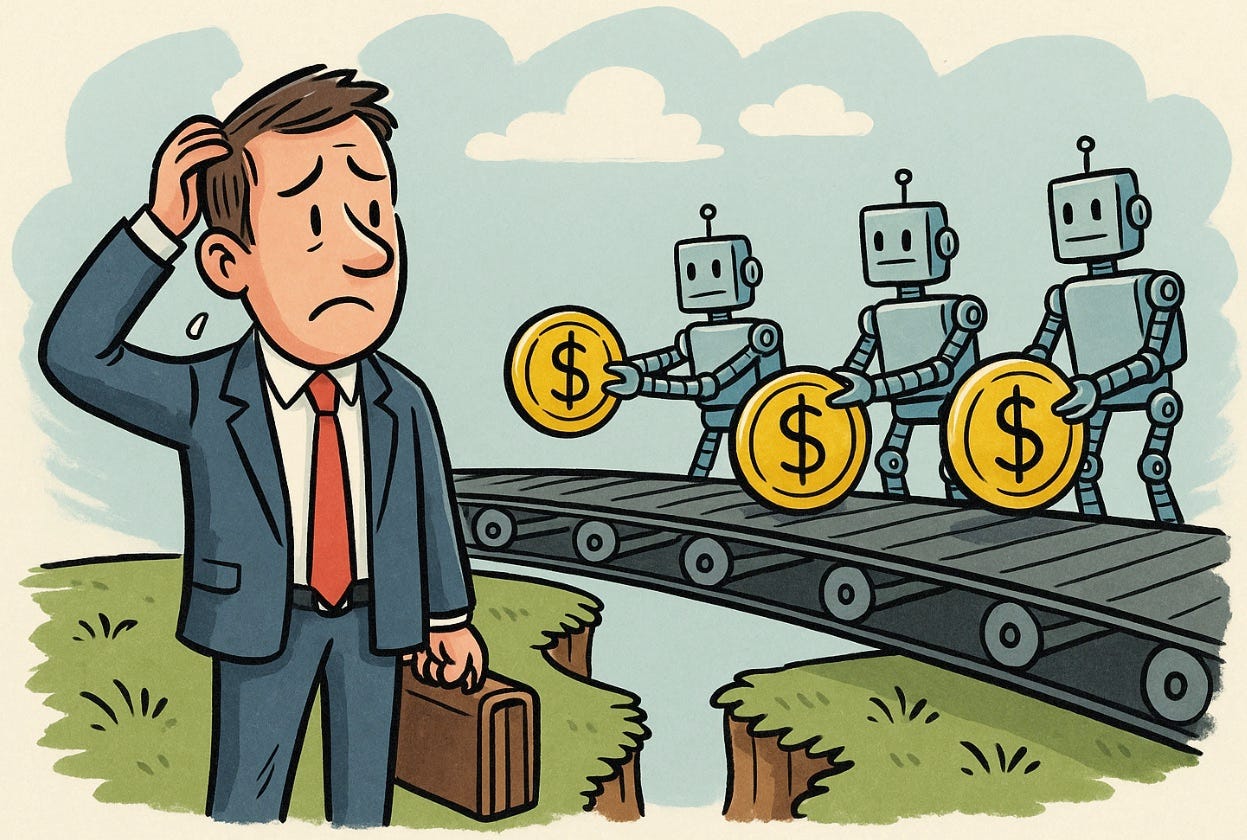Automation Is Not About Efficiency. It’s About Missing Opportunities
Why automation is less about working faster and more about avoiding lost opportunities.
When people think about automation, scraping, or AI, they often talk about saving money or getting more productive. That is the surface. The real value is in what you miss if you don’t use them. It is not about doing your current tasks faster. It is about being able to do things you would never do manually because they are too boring, too repetitive, or simply too much work.
The Illusion of “Later”
I hear it a lot: “I’ll test these tools when I have more time, maybe during vacation.” This mindset is a trap. While you wait for that “perfect moment,” your competitors are already experimenting, making mistakes, and building systems that give them an edge. By the time you decide to start, they already have data you can’t recreate.
This is how opportunities are lost—not because you were less productive, but because you weren’t even in the game.
Before and After AI
Think about before ChatGPT and after. Before, writing an article draft or building a simple analysis required time, skill, and effort. After, anyone can start within minutes. It’s not just about writing faster. It’s about doing things you never would have attempted before because they felt out of reach.
That’s the real shift with automation. It changes what is possible, not just what is faster.
The Dropout Trap
Another common mistake is people trying automation once, not getting what they expected, and giving up. They assume it should work like a magic wand. But no tool works that way.
It reminds me of when computers first entered offices. At first, they slowed people down. Typists were faster on typewriters than managers fumbling with keyboards. Early spreadsheets looked harder than paper ledgers. The people who quit at that stage went back to what felt comfortable. The people who pushed through learned a new skill that gave them an advantage for decades.
Automation and AI are at that stage right now. If you are waiting until it feels easy, you will join late and spend years catching up.
The POS Story
I saw this firsthand 25 years ago when I sold POS (point-of-sale) systems to small shops. At first, owners hated them. Before, cashiers just took money and gave change. With POS, they had to scan items, press buttons, and if they forgot to log something, the system blocked the sale.
It looked like more work. It was more work—at the start. But over time, those businesses had accurate sales records, inventory management, and insights into what was selling. That information changed how they operated. Those who resisted POS? Many eventually shut down because they couldn’t compete.
We are living the same moment now with automation and AI. At first, it feels like friction. But long term, it decides who stays in the market and who fades away.
Historical Evidence
Spreadsheets (1980s): Before Lotus 1-2-3 or Excel, companies managed accounts manually. Switching was painful and slow. But within a decade, every serious business ran on spreadsheets. Those who ignored them could not scale.
Email (1990s): Fax and mail were comfortable. Email seemed unnecessary and slow to adopt. Today, no business runs without it. Early adopters moved faster and built global networks while others were stuck in local markets.
E-commerce (2000s): Many retailers thought online sales would never matter. Those who waited are gone. Amazon, eBay, and Shopify became the default marketplaces.
Cloud Software (2010s): Companies resisted SaaS because on-premise felt safer. Those who delayed lost agility and paid the price when competitors scaled faster.
Every time, the pattern repeats. At first, tools feel like extra work. Then they become standard. Finally, they become the only way forward.
What Happens If You Do Nothing
When you don’t use automation, it’s not that you work slower. It’s that you miss entire categories of work.
You don’t track competitor pricing daily.
You don’t collect market signals consistently.
You don’t build historical data that can reveal long-term trends.
You don’t compare patterns across months or years.
Without that base, your decisions are assumptions, not data. You think you are being careful by not “wasting time on gadgets,” but in reality you are giving away opportunities you can never recover.
Being in the Game
Tools will keep evolving. Some will survive, others will vanish. That is normal. But the only way to figure out what works is to use them. Not once. Not on vacation. Consistently.
Just like with computers, email, and POS, the winners are not the ones who waited until the tools were perfect. They are the ones who invested time when it was still messy, learned how to use them, and built advantages that snowballed over time.
If you’re unsure where to start, we can help you set up and test your first Hexomatic workflow, so you move from curiosity to results right away.
Our Concierge Service builds your first automation inside your account, so you can see results immediately without trial and error.



Loved how you framed this ♥️ It reminded me of something I wrote recently, maybe you’d enjoy it too?
What if fall wasn’t just pumpkin spice clichés… but an actual guide to tiny rituals, snack hacks, and slow joy?
Your 2025 cozy kit is here:
https://calmfeed.substack.com/p/cozy-fall-guide-2025